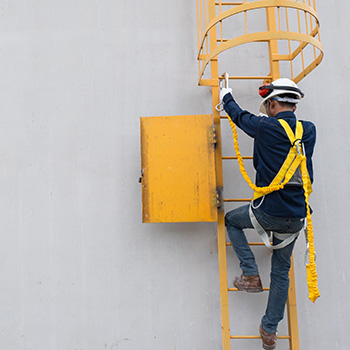How to Stay Safe on a Construction Site: Fall Hazards Edition

As a construction worker, you will be exposed to many dangerous hazards on the job site; I’m sure you already know that. But do you know which ones are the most common and what you can do to protect yourself? How about ones that OSHA views as most important? This Safety Hazard Series will be focusing on OSHA standards at a construction site and the “Fatal Four,” the leading causes of fatalities in the construction industry.
In 2013, 20.3% of worker fatalities came from this industry and the “Fatal Four” accounted for 58.7% of construction worker deaths. The “Fatal Four” includes:
- Falls
- Struck by object
- Electrocutions
- Caught-in/between
To start off this series, we will discuss the most common of them all: fall hazards.
What are the potential fall hazards?
In 2013, 294 out of 796 total deaths in construction came from falls. OSHA requires personal fall protection at six feet, but once you are working anywhere that is above four feet, you are at risk. If you are on a scaffold, the protection is required at ten feet. Here are the potential fall hazards you may be exposed to:
- Falling from the roof to the ground
- Falling from a ladder
- Jumping from the second story to the ground
- Falling through skylights, floor openings, and roof openings
What can you do to protect yourself?
When you are working on scaffolds, prevent a fall by using one of these fall protection systems whenever possible:
- Guardrails
- Personal Fall Arrest System
- Safety Net Systems
- Safety Monitoring System
Some safety equipment that can be used as, or in conjunction with, these systems are:
- Belts
- Harnesses
- Lanyards
- Lifelines
- Shock absorbers
- Safety nets
- Rope Grabs
If you need more information or training on fall hazards, the OSHA Education Center provides online courses for the construction industry. You can select to take the 10-hour or 30-hour training and at the end of the course, you will receive a Hazard Recognition Training Wallet Card and certificate.
Categorized in: OSHA, Safety Tips, Workplace Safety
